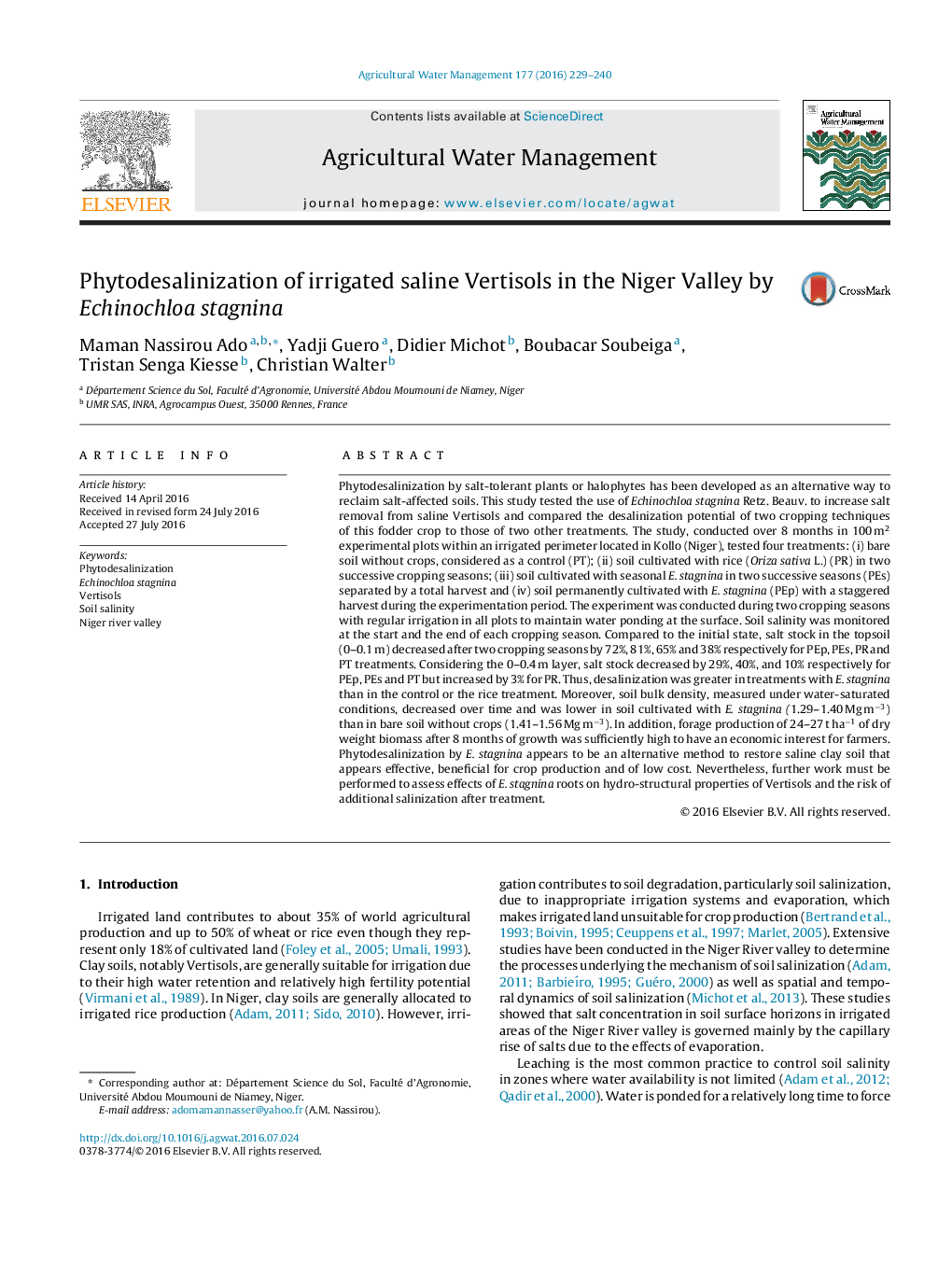| Article ID | Journal | Published Year | Pages | File Type |
|---|---|---|---|---|
| 6363409 | Agricultural Water Management | 2016 | 12 Pages |
Abstract
Phytodesalinization by salt-tolerant plants or halophytes has been developed as an alternative way to reclaim salt-affected soils. This study tested the use of Echinochloa stagnina Retz. Beauv. to increase salt removal from saline Vertisols and compared the desalinization potential of two cropping techniques of this fodder crop to those of two other treatments. The study, conducted over 8 months in 100 m2 experimental plots within an irrigated perimeter located in Kollo (Niger), tested four treatments: (i) bare soil without crops, considered as a control (PT); (ii) soil cultivated with rice (Oriza sativa L.) (PR) in two successive cropping seasons; (iii) soil cultivated with seasonal E. stagnina in two successive seasons (PEs) separated by a total harvest and (iv) soil permanently cultivated with E. stagnina (PEp) with a staggered harvest during the experimentation period. The experiment was conducted during two cropping seasons with regular irrigation in all plots to maintain water ponding at the surface. Soil salinity was monitored at the start and the end of each cropping season. Compared to the initial state, salt stock in the topsoil (0-0.1 m) decreased after two cropping seasons by 72%, 81%, 65% and 38% respectively for PEp, PEs, PR and PT treatments. Considering the 0-0.4 m layer, salt stock decreased by 29%, 40%, and 10% respectively for PEp, PEs and PT but increased by 3% for PR. Thus, desalinization was greater in treatments with E. stagnina than in the control or the rice treatment. Moreover, soil bulk density, measured under water-saturated conditions, decreased over time and was lower in soil cultivated with E. stagnina (1.29-1.40 Mg mâ3) than in bare soil without crops (1.41-1.56 Mg mâ3). In addition, forage production of 24-27 t haâ1 of dry weight biomass after 8 months of growth was sufficiently high to have an economic interest for farmers. Phytodesalinization by E. stagnina appears to be an alternative method to restore saline clay soil that appears effective, beneficial for crop production and of low cost. Nevertheless, further work must be performed to assess effects of E. stagnina roots on hydro-structural properties of Vertisols and the risk of additional salinization after treatment.
Keywords
Related Topics
Life Sciences
Agricultural and Biological Sciences
Agronomy and Crop Science
Authors
Maman Nassirou Ado, Yadji Guero, Didier Michot, Boubacar Soubeiga, Tristan Senga Kiesse, Christian Walter,
